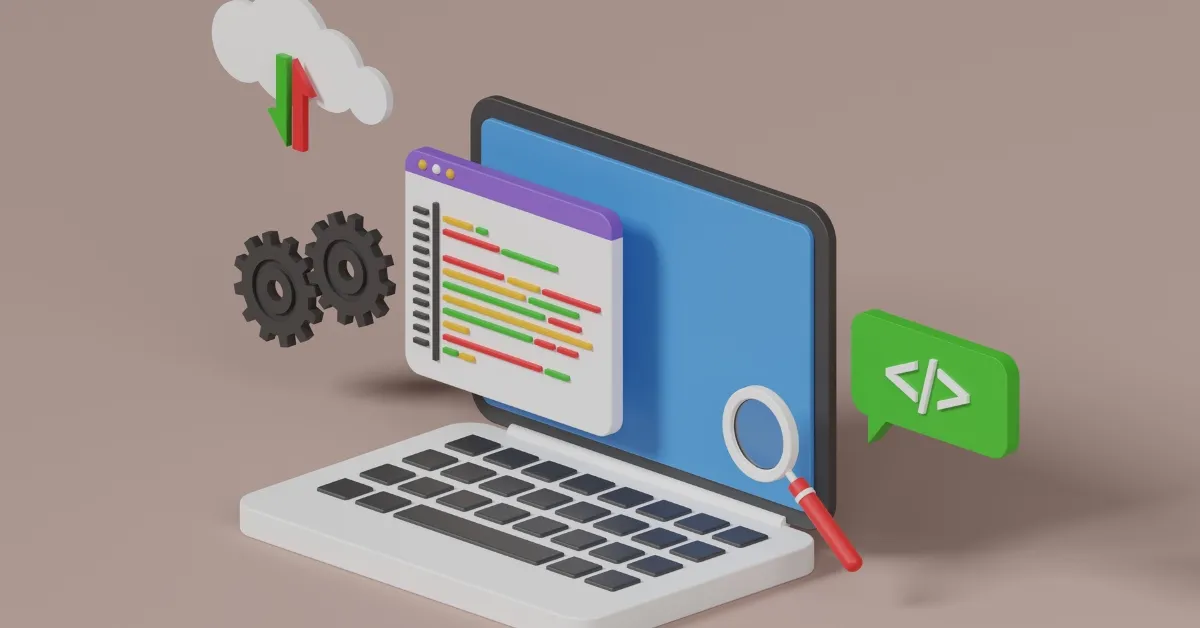10 Best Performance Testing Tools for Your Development Team

SUMMARY
We tested and compared multiple performance testing tools to find an ideal solution your product team can use to ensure high-performing websites. Below are our top ten recommendations:
- QA.tech – #1 Rated intuitive website-only performance testing tool.
- Apache JMeter – Comprehensive load and performance testing software.
- LoadRunner – Enterprise-grade performance testing software.
- NeoLoad – Scalable performance test tool for DevOps.
- WebLOAD – Best test performance tool to simulate complex environments.
- LoadNinja – Cloud-based load performance testing tool.
- LoadView – Real browser-based load software
- Katalon – Versatile performance test tool for both web and mobile.
- StormForge – Performance optimization software with AI-driven insights.
- Silk Performer – Robust tool for large-scale performance load testing.
Join the QA Revolution
Sign up for the latest AI and QA technology updates!
Work Email*
I want to subscribe to*
- Product Updates
- News and Resources
One way to give your users the best experience is to verify that your software will work under every condition. This is where performance testing tools, come in.
These applications are designed to simulate different scenarios to give you insight into how your software acts under load, stress, and other scenarios.
We will examine the top 10 performance test tools and how they can help your development team maintain high-quality products.
What Is Performance Testing?
Performance testing is the aspect of software testing that focuses on discovering how a system behaves in terms of speed, responsiveness, and stability under a particular workload.
It helps the QA team identify bottlenecks in software so it can be improved to create a better experience for its users.
What Are Performance Testing Types?
Performance testing passes a system through a range of tests to ensure it can handle expected and unexpected user loads.
Here are some of the different performance testing types:
Load Testing
Load testing simulates expected user traffic to assess a system’s capacity, identify bottlenecks, and ensure optimal performance under varying loads. By gradually increasing the load, organizations can optimize their infrastructure and prevent performance issues that impact user experience and business operations.
Stress Testing
Stress testing identifies a system’s breaking point by subjecting it to extreme loads beyond its expected capacity. This helps assess its resilience, identify vulnerabilities, and ensure its stability under high-pressure conditions.
Endurance Testing
Endurance testing evaluates a system’s ability to sustain a consistent load over a prolonged period, identifying performance degradation and ensuring reliability.
Spike Testing
Spike testing simulates sudden, unexpected load surges on a system to assess its performance and identify potential bottlenecks. This helps organizations optimize their infrastructure and ensure the system’s reliability even during periods of high demand.
Why Do Development Teams Need Performance Testing?
Development teams need tools for performance testing to ensure that their applications perform smoothly and reliably under various conditions to deliver a satisfactory user experience.
What Is a Performance Testing Tool and How Does It Work?
A performance testing tool is software that simulates various conditions of user activity to determine how an application will perform under that load in real life.
It works through the following steps:
- Set up test scenarios.
- Carries out test execution to monitor performance.
- Captures detailed reports of the performance process.
- Identifies failures and makes recommendations to optimise performance.
What Are the 10 Best Performance Testing Tools?
There are many load performance testing tools in the market and here is our list of the top load and performance testing tools you can select from.
1. QA.tech
QA.tech is designed specifically for websites. Its intuitive interface makes it easy for development teams to carry out tests with limited technical knowledge. It also offers custom test scenarios and comprehensive reporting to effectively optimise your software.
Features
- Comprehensive load testing.
- Automated report generation.
- Scalable testing capabilities.
- Seamless integration with CI/CD pipelines.
- Real-time performance monitoring.
Pros
- User-friendly interface.
Cons
- Limited to website testing.
Pricing
- Starter: $99/month per team.
- Pro: $89/month per developer.
2. Apache JMeter
This is a versatile open-source tool popularly used for performance and load testing applications with flexibility and support for various protocols such as HTTP, HTTPS, and FTP. As a load test performance tool, it also has a detailed Test IDE that helps to record, build, and debug test plans.
Features
- Supports multiple protocols.
- Extensive plugin ecosystem.
- Open-source and free to use.
- Detailed performance reports.
- Customizable test scenarios.
Pros
- Free and open-source.
Cons
- Steep learning curve.
Pricing
Free
3. LoadRunner
LoadRunner is by Micro Focus and it is designed for enterprise-level applications. It offers compatibility with applications like HTML5, JAVA, and MQTT. With LoadRunner, you have the freedom to create, correlate, and improve scripts to enhance your load testing.
Features
- Protocol-level testing.
- Real-time monitoring.
- Scalability for large tests.
- Comprehensive analytics.
- Integration with other Micro Focus tools.
Pros
- Enterprise-grade solution.
Cons
- Complex setup.
Pricing
On request.
4. Tricentis NeoLoad
Neoload is tailored for Agile and DevOps teams. It also allows for quick test creation, execution, and analysis, which makes it ideal for fast-paced development scenarios. By leveraging RealBrowser technology, NeoLoad uses a unified interface to combine browser-based performance testing for both cloud-native applications and custom web.
Features
- Cloud-based testing.
- Automatic test updates.
- Real-time collaboration.
- Scriptless test design.
- Integration with CI/CD tools.
Pros
- Supports continuous testing.
Cons
- Limited to web and mobile applications.
Pricing
$20,000 annually with 300 virtual users.
5. WebLOAD (by Radview)
WebLOAD gives you deep insights into your software’s performance under various conditions. The highly customised scripting session greatly mimics real-life scenarios. Additionally, it offers advanced scripting functions.
Features
- Customizable test scripts.
- Real-time monitoring.
- Detailed analytics and reporting.
- Support for complex web applications.
- Integration with CI/CD pipelines.
Pros
- Powerful scripting engine.
Cons
- Expensive pricing.
Pricing
On request
6. LoadNinja (by Smartbear)
LoadNinja provides cloud-based solutions for load testing web applications. It allows developers to run tests with real browser-based testing. The testing process also reflects actual end-user experience to properly isolate issues that might affect their satisfaction.
Features
- Real browser testing.
- No coding is required.
- Cloud-based execution.
- Detailed performance reports.
- Automated test creation.
Pros
- No coding is required.
Cons
- Limited to web applications.
Pricing
- Starter: $301
- Pro: $881
- Premium: $1,133
7. LoadView
LoadView allows you to test your application under real-world conditions. Its user-friendly interface and detailed analytics make it easy to optimize your system’s performance. Using a network of global injectors, this tool allows you to carry out website load tests across various locations in the world.
Features
- Automated test scheduling.
- Real-world load testing.
- Detailed performance analytics.
- Integration with popular CI/CD tools
- Geographically distributed testing.
Pros
- Easy setup and execution.
Cons
- It can be expensive for large tests.
Pricing
Starts from $129/month.
8. Katalon
Katalon supports both automated and performance testing. It is versatile, user-friendly, and integrates easily with various tools in the DevOps ecosystem. Irrespective of your development team’s size, you can carry out API, desktop, web, and mobile testing on Katalon.
Features
- Scriptless test automation.
- Cross-platform testing.
- Community and enterprise support.
- Detailed reporting and analytics.
- Integration with CI/CD tools.
Pros
- User-friendly interface.
Cons
- Limited scalability.
Pricing
Package starts from $1,499 annually.
Join the QA Revolution
Sign up for the latest AI and QA technology updates!
Work Email*
I want to subscribe to*
- Product Updates
- News and Resources
9. StormForge
StormForge focuses on performance testing and optimization. It uses machine learning to provide recommendations to improve an application’s performance. The real-time results it provides make it easy to identify and resolve performance bottlenecks to give end-users a better experience.
Features
- Machine learning-based optimization.
- Automated testing and analysis.
- Integration with cloud services.
- Real-time performance monitoring.
- Detailed performance reports.
Pros
- Advanced optimization functions.
Cons
- Requires understanding the basics of machine learning.
Pricing
On request.
10. Silk Performer
This robust load and performance testing tool supports complex enterprise environments. It can simulate up to thousands of concurrent users using little hardware resources. Furthermore, it creates realistic and customizable load tests by using virtual users who mimic real user behaviour.
Features
- Wide technology support.
- Scalable load testing.
- Real-time performance monitoring.
- Thorough reporting and analysis.
- Can be used with other Micro Focus tools.
Pros
- Advanced reporting functionalities.
Cons
- Requires technical knowledge.
Pricing
- On request.
What Is Our Most-Recommended Performance Testing Tool and Why?
After thoroughly examining various performance test tools, QA.tech stands out from other load and performance testing tools.
As such, it is our top recommendation. Its intuitive design, robust feature set, and user-friendly interface make it the best choice for teams who prioritise their website’s performance.
It is simple to use, even non-technical development team members can perform comprehensive load and performance testing with ease.
Furthermore, its seamless integration with CI/CD pipelines and real-time performance monitoring makes it the ideal option.
Final Words on Performance Testing Tool
With the best QA automation service and the right load and performance testing tool, you’ll ensure that your applications can handle the demands of real-life usage.
Whether you’re a small team or an enterprise, the tools listed above have a range of features and capabilities that will meet your needs.
To start optimising your website’s performance today, check out QA.tech’s pricing page and see how this tool can transform your testing process.
FAQs
1. Are performance and load testing the same?
No, performance and load testing are not the same. Performance testing is a broad term that includes various types of testing, including load testing. Load testing is the type that measures how a system handles a given load.
2. What tools can I use for load and performance testing?
Some popular load and performance test tools you can use include QA.tech, NeoLoad, Katalon, and Apache JMeter.
3. Are there free performance testing tools?
Yes, there are tools for performance testing, like Apache JMeter, that have free versions but with limited features.

Stay in touch for developer articles, AI news, release notes, and behind-the-scenes stories.

